Belarus riot police disperse crowds with Czech-made flashbangs
Open-source clues on Czech arms company
Belarus riot police disperse crowds with Czech-made flashbangs
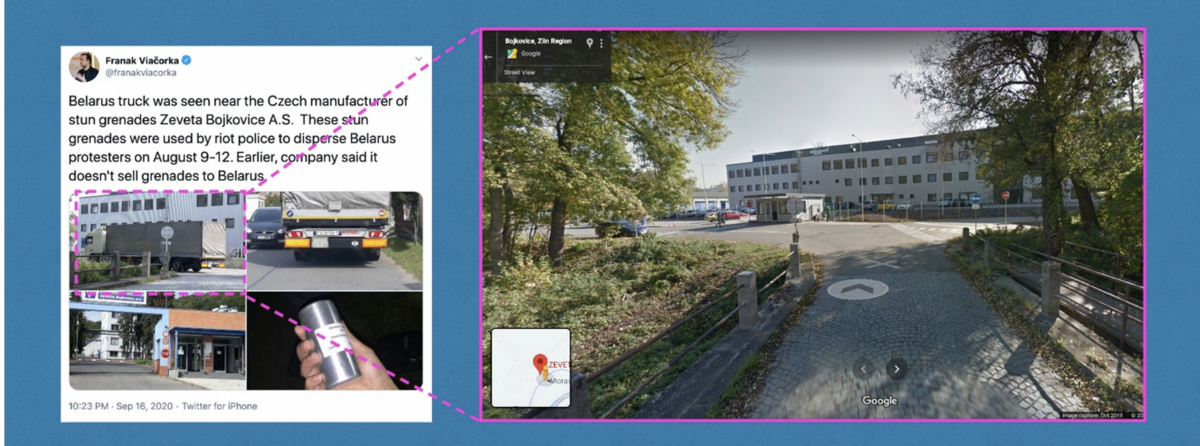
Open-source clues on Czech arms company potentially supplying stun grenades to Lukashenka’s regime in violation of EU embargo
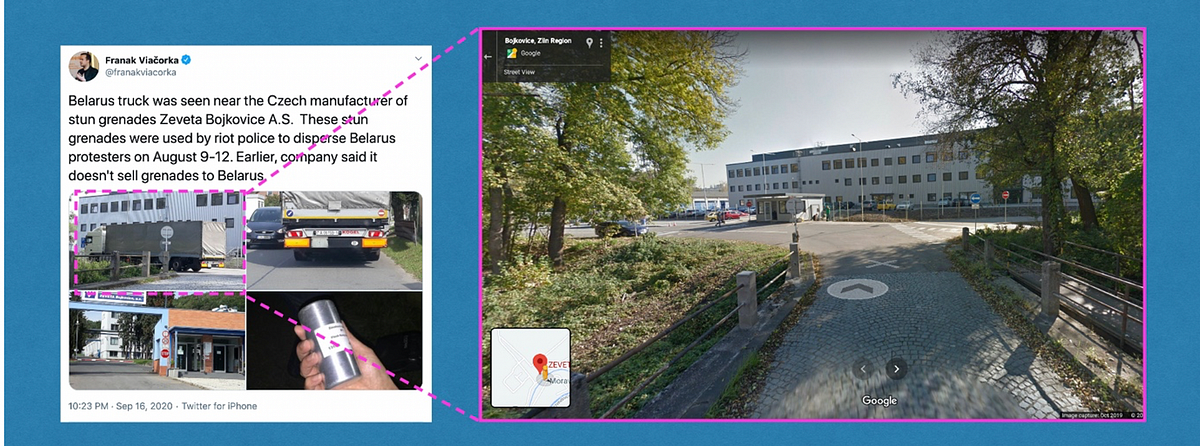
After Czech arms company Zeveta denied in August 2020 that they were selling flashbangs to the Lukashenka regime, photos of a truck next to the factory with Belarusian plates reignited the discussion.
In mid-August, photos appeared online of Czech-made flashbangs that were used allegedly against peaceful protesters. Some Twitter users connected these flashbangs to Czech arms producer Zeveta, which publicly denied selling arms to Belarus. As Belarus is under a weapons embargo by the European Union, of which the Czech Republic is a part, this sale would be a serious breech.
This discussion reignited online this week when a cargo truck with Belarusian plates was allegedly photographed next to the Czech factory.
Background
Since the protests started in Belarus following the contested presidential election on August 9, 2020, they have been met not only with disinformation but also with brute force. The DFRLab has been monitoring the protests in Belarus since their beginning.
Among the anti-protest tactics used by the police, such as water cannons and police batons, the Lukashenka regime has also used stun grenades against the Belarusian people. Numerous videos of stun grenade use have been documented online, varying from explosions recorded from up close to explosions further in the distance. The use of these weapons against civilians has resulted in serious injuries. Some people injured by the canisters have required immediate medical attention due to serious burns, and others have even lost limbs as result of the grenades.
#Belarus: a #Minsk bus driver was seriously injured when a police stun grenade exploded right next to him pic.twitter.com/xmIS0yuCOA
— Thomas van Linge (@ThomasVLinge) August 10, 2020
As early as August 10, 2020, photos of the remnants of these devices started circulating on social media. The label of the stun shells had inscriptions in Czech, suggesting that they were made in the Czech Republic.
Give me any reason why the EU hasn't banned sale of flash bang grenades, or any police-use weapons and ammo, to a state like Belarus. pic.twitter.com/KTsHL7LpUK
— Christo Grozev (@christogrozev) August 10, 2020
These findings caused a lot of commotion online, as activists suggested that Czech company Zeveta Bojkovice A.S. was selling these arms to the Lukashenka regime. Due to the deteriorating human rights and democracy situation in Belarus, the European Union implemented sanctions in June 2011 by adopting Council Decision 2011/357/CFSP, implemented by Council Regulation (EU) No 588/2011. This regulation banned “any involvement in the supply of arms, military equipment as well as equipment that might be used for internal repression.” Some of the empty cannisters documented in open-source imagery, however, showed the date 01/2012, suggesting they were made after the sanctions were implemented.
The EU arms embargo which prohibits, inter alia, selling riot control gear, wen into force on June 20, 2011.
One of the Czech-made flashbang grenades used by riot police in Minsk is dated January 2012.
If this is indeed the production date, that would mean EU embargo violation. pic.twitter.com/TmkYpq1NHb
— THEY/THEMARS 🇺🇦 #ArmUkraineNow (@Mortis_Banned) August 10, 2020
Online findings confirmed that the Czech company was indeed selling this type of stun grenades. Nonetheless, as early as August 10, the company denied the claims.
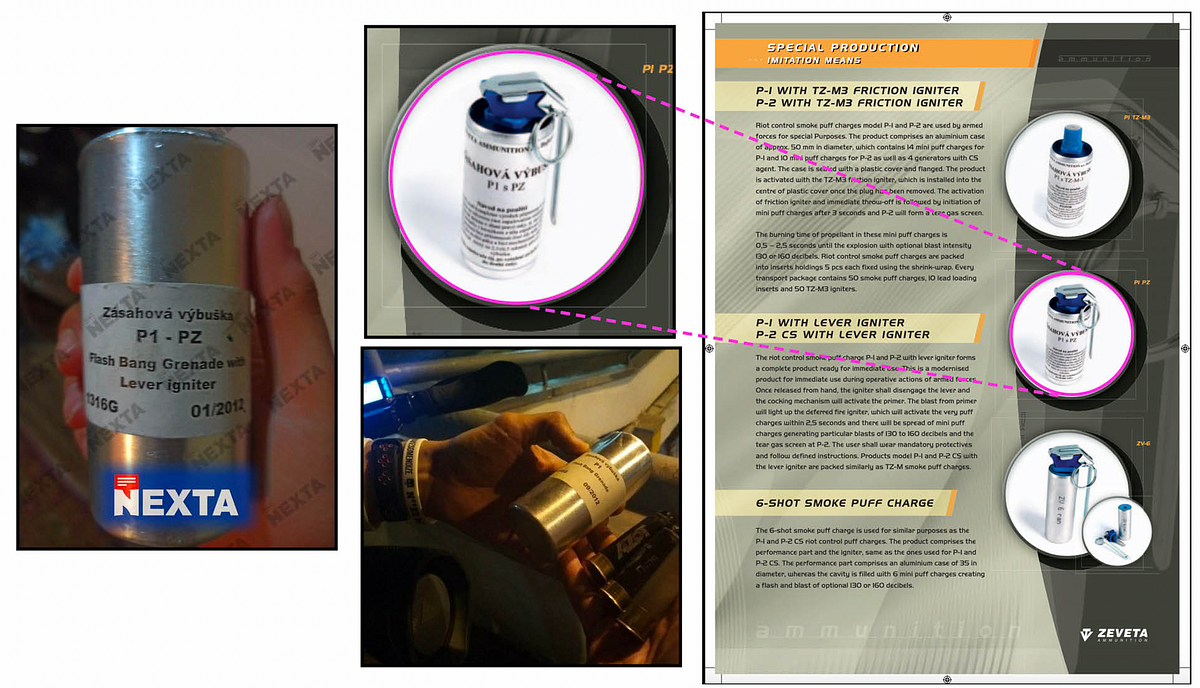
Online searches also suggested that these stun grenade are available for sale online. Videos of civilians using this type of grenade can also be found online, suggesting that it is possible to acquire them outside of governmental jurisdiction.
Evidence also appeared online that suggested the Czech government sold 7,450 kilograms of explosives, including grenades, to Belarus in 2015. These findings have not been disputed online.
na záhadný prodej "granátů" Bělorusku jsme v @NESEHNUTI upozorňovali již v roce 2015. Podle Českého statistického úřadu tam v roce 2014 bylo z ČR vyvezeno 7,5 tun zboží kategorie "Bomby, granáty, torpéda, miny, střelné řízené ap" (1/5) https://t.co/219XGYMh8F pic.twitter.com/8c75vromFz
— Peto Tkac 🍉 (@PetoTkac) August 10, 2020
Geolocation
After the initial outrage, the discussion of the possible violation of the EU arms embargo quieted down in the subsequent weeks before reviving in mid-September. On September 16, Belarusian activist Franak Viačorka, a Nonresident Fellow with the Atlantic Council’s Eurasia Center, posted photos of a truck with Belarusian license plates allegedly in the vicinity of the Zeveta weapons factory.
Belarus truck was seen near the Czech manufacturer of stun grenades Zeveta Bojkovice A.S. These stun grenades were used by riot police to disperse Belarus protesters on August 9-12. Earlier, company said it doesn't sell grenades to Belarus. pic.twitter.com/crfaqFAj7e
— Franak Viačorka (@franakviacorka) September 16, 2020
In order to make sure that the photos were genuine, DFRLab carried out the standard due diligence procedures. Open source methods did not conclude that the photos might have been photoshopped or posted online before, suggesting that they are most likely genuine. Additionally, analysis of satellite imagery and open source images of the factory did not show any inconsistencies or signs that they could have been taken before 2020. The DFRLab geolocated these photos to help verify their authenticity. In the first photo, the truck was captured turning at the entrance to the factory complex. This location perfectly matched with the images on Google StreetView.
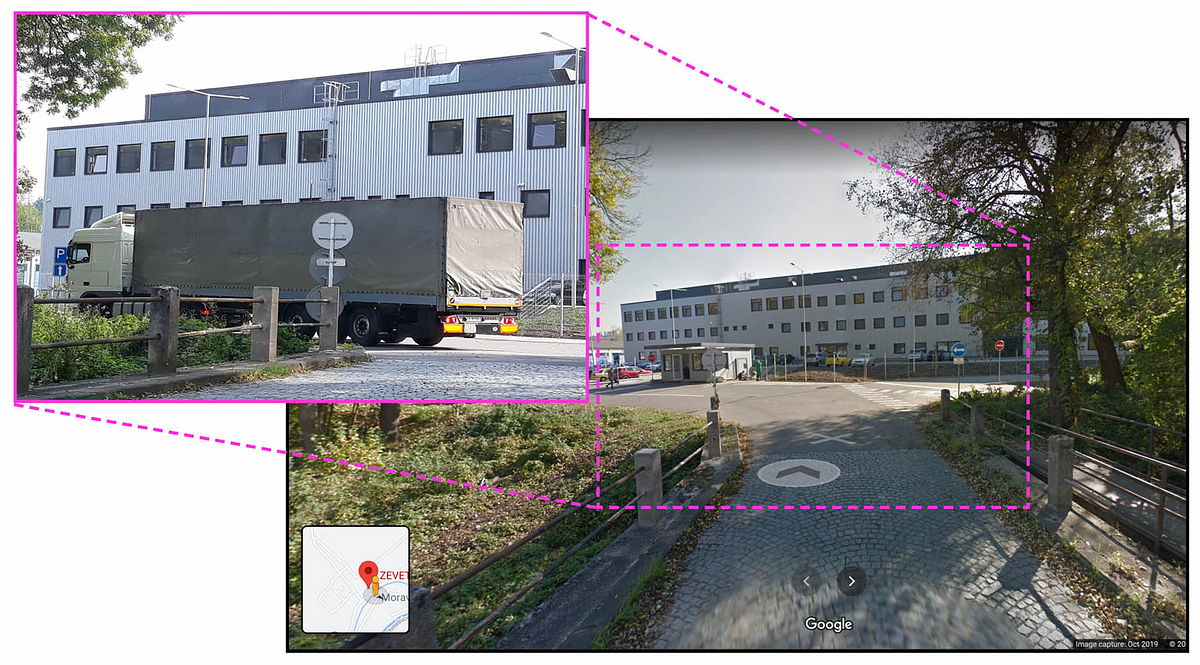
The second photo had fewer geolocation but the red house in the background was a sufficient clue. This photo was taken only a couple of kilometers away from the factory, on the main road leading to the complex. In this photo, the Belarusian license plate is clearly visible, yet the DFRLab was unable to identify to whom the truck belongs.
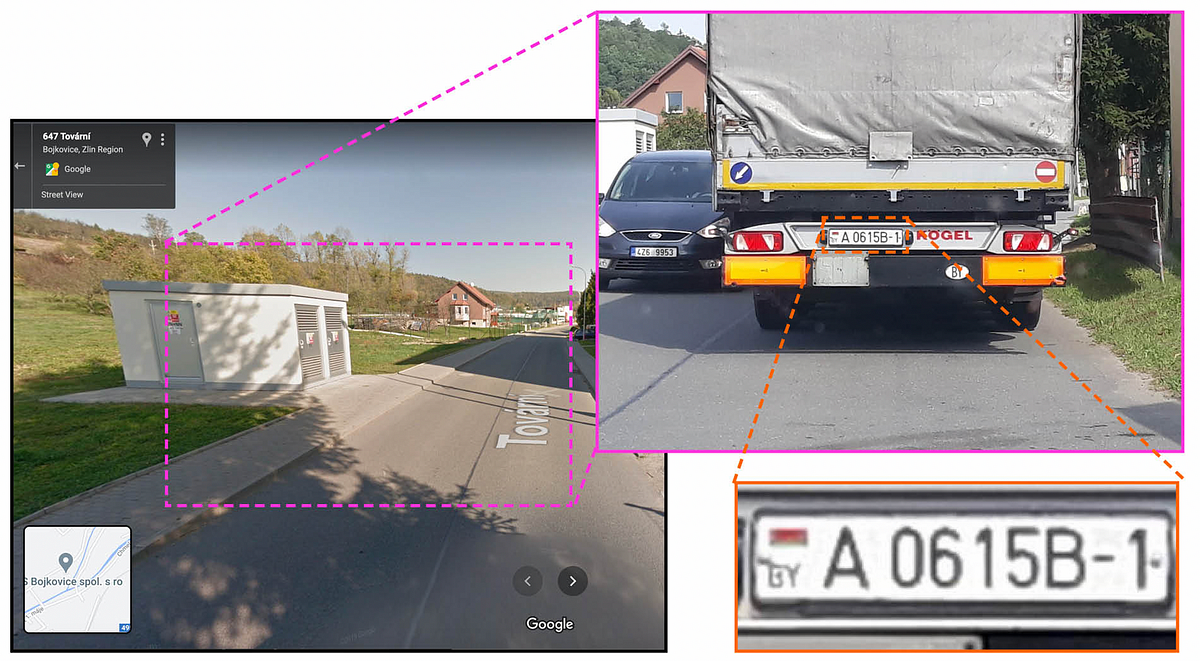
The two locations of the photos both appeared to be in the town of Bojkovice, Czech Republic.
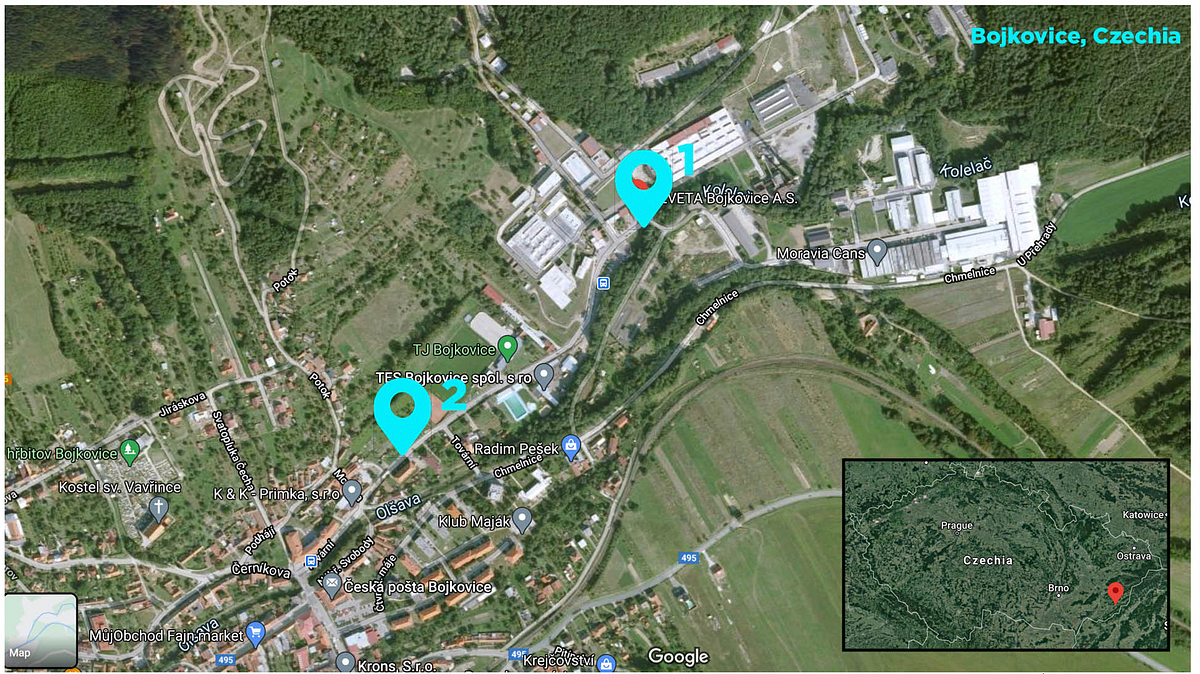
Currently, the available open-source evidence does not confirm with certainty that the Czech Republic sold weapons to Belarus in violation of European Commission sanctions in effect on the Lukashenka regime since 2011. Despite the factory denying these claims, the question remains how exactly these Czech-made stun grenades ended up in the hands of Lukashenka’s riot police.
Lukas Andriukaitis is an Associate Director with the Digital Forensic Research Lab;
Follow along for more in-depth analysis from our #DigitalSherlocks.

